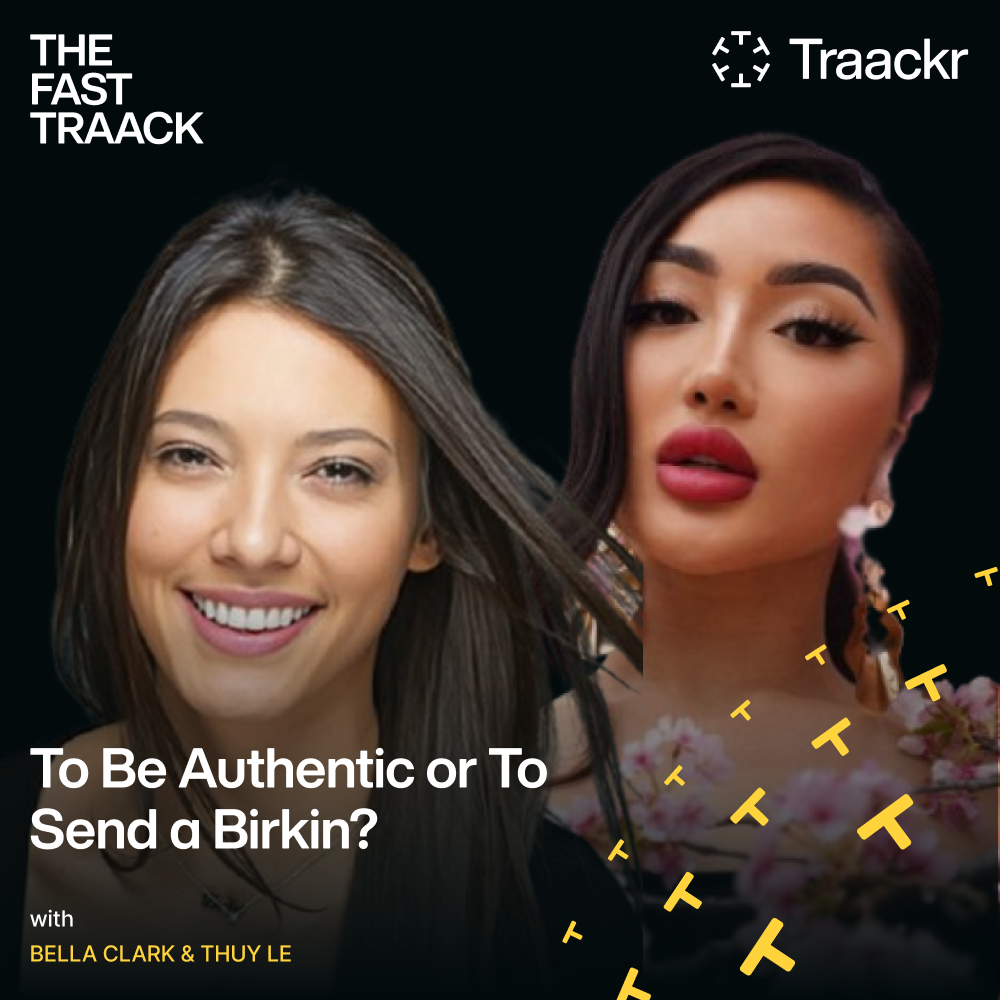5 Influencer Program Mistakes to Avoid in 2023

The beginning of a new year is a great time to adopt new habits and throw out bad ones. While this could definitely translate to better mental health, exercising, or financial habits, it can also apply to your professional life.
More specifically — there are a few obvious (yet important) influencer program mistakes that you should leave in the past. From managing relationships and communication, to measuring ROI, learn what you should avoid in order to get the most out of your influencer program.
5 Influencer Program Mistakes to Avoid in 2023
Influencer Program Mistake #1: Thinking vague language is “good enough”
“When it’s clear what you’re trying to achieve from both the talent and brand side, it makes the whole process easier.” - Alice Hampton, Founder of ACP Management
Transparent communication is an absolute must for influencer marketing. A single misunderstanding can muck up or stall a partnership, which is why it’s important to be clear from the very beginning. Being transparent not only builds trust with partners, it increases the likelihood that they will want to work with you again (a key element of any successful influencer marketing program).
Here are three areas that absolutely need transparent communication:
- Partnership transparency - Be open and clear about the partnership you’re looking for. Let influencers know up front whether you are asking them to be part of a paid or organic campaign. Never hide the fact that an opportunity is unpaid. Tip: some platforms like Traackr can make this aspect of influencer marketing easier, by providing ways to standardize workflows and processes, and influencer onboarding.
- Product transparency - Be honest about your product. For example, if you’re a skincare brand, share accurate information about a product’s ingredients. If you’re a fashion brand that boasts sustainability, detail how your products and processes are sustainable. The more your influencer partners know they can trust you and your products, the better the relationship will be.
- Content and compensation transparency - If you’re thinking of featuring influencer content in other marketing materials, make sure to include usage rights in your initial contract. If there are multiple deliverables, be clear about which pieces of content you plan to repurpose, and where you would like to share them. Influencers are creators! Having an open conversation about usage rights (and the fees included) shows that you respect the time and effort they put into their content.
Influencer Program Mistake #2: Providing too much detail or direction in influencer briefs
“When I sense that there is restricted creative freedom, I immediately pull back because I don’t want to do just an ad. I want to do something that is funny, relatable, and promotes the company in my own voice.” - Kat Stickler, Influencer & Comedian
As marketers, we’re pressured to promote our products and brand in just the right way. So, it’s only natural that we may over do it when it comes to how we brief our influencer partners.
However, restrictive creative freedom can give influencers pause in wanting to work with you. Influencer marketing centers on authenticity and creators want to create something that fits in with the rest of their content, they don’t want to just do an ad.
Keep your brief should include key logistical information, without being creatively restrictive:
- When - Detail when the content should go live.
- Where - List where you would like influencers to share their content i.e. Instagram, TikTik, etc.
- Which - Communicate which type of campaign the influencer will be participating in (organic or paid) and include the details around compensation.
- What - Note what should be included in posts such as campaign hashtags, links, and social tags.
- Don’t write a script
- Don’t create a frame-by-frame shot list
- Don’t ask influencers to include every single selling point
Details like background information about your brand (what’s your mission, purpose, and values), product information, and some general messaging guidelines are all fine to include in your brief. Remember to also include language about whether the campaign it’s gifted or sponsored, and a timeline for deliverables. If possible, try to keep your influencer briefs to one page (one and a half, max).
Learn more about how to include the right balance of detail and brevity in your influencer program briefs.
Influencer Program Mistake #3: Negotiating too hard with your partners
“In today’s age, being an influencer is a business. Since this is a full time job for a lot of people, I really think the days of bartering are gone. If you want good relationships and good value, pay your influencers fairly!” — Bette Ann Fialkov, head of entertainment and culture at hims & hers
As a marketer, you will always be thinking about your influencer marketing ROI and budget. And while it’s good to have a good negotiation strategy, you should always pay influencers appropriately for the value that they add to your business.
When you are discussing compensation it’s important to avoid approaching it like a simple transaction. Instead, you should approach an influencer as if they’re already a partner. In your communications, really highlight how both parties will benefit from the campaign and tell them why you want them, specifically, as your partner. Sharing examples of an influencer’s content that you like is a small detail, but it goes a long way in showing that you genuinely care about the partnership.
That being said, it is always a good idea to back up these conversations with data. Instead of basing your conversations on vanity metrics like follower counts, use a performance-based compensation strategy. To make compensation results-oriented and transparent, focus on influencer performance tied to metrics such as video view rates, engagement rates, and / or sales. To hone in even further, base your offers on how past sponsored content performed.
Last, if you truly cannot afford an influencer’s flat sponsorship fee, invite them to have an open conversation with you about how you could make it work. (This is especially relevant for small brands with limited budgets). To be clear, this is not about offering them less compensation, but about paying them in ways that are viable for your business. More gifted products? Longer guaranteed contract? Donations towards a cause they care about?
Influencer Program Mistake #4: Not having a regular audit of your budget
50% of marketers in the US report that they spend between $50K and $500K on influencer programs per year. Considering that sponsored influencer posts can get up into the hundreds of thousands (even more), that size budget isn’t as roomy as it may appear.
That being said, influencer programs can be incredibly spend efficient, when done right. Marketers often get into trouble when they put their strategies on autopilot, and forget (or don’t have the time) to do in-depth audits of their budgets.
Make sure you take time to analyze your budget on a regular basis with the goal of finding the most inefficient costs from your program. Even the smallest inefficiencies can add up!
Ask yourself, what is your program’s equivalent to a $5 weekly DoorDash delivery? What is a “nice to have” that doesn’t necessarily deliver a ton of impact? These types of inefficiencies could live anywhere, but a few could look like:
- Wasted product and shipping costs from sending gifts to influencers who weren't interested/never posted
- Paid influencer campaigns that didn’t perform as well as organic campaigns
- A handful of influencer partners that had low performance
The cool part? Once you’ve identified and cut the things that weren’t working for you, you can start investigating where you want to reinvest that money. Are there successful partnerships or initiatives from last year that you want to double down on? Are there new things you want to experiment with, like a certain platform, influencer tier, or content type?
Influencer Program Mistake #5: Relying on singular KPIs for influencer marketing measurement
“The biggest mistake that I often see brands make is that they base the performance or score of their influencer marketing campaign on just one KPI. Influencers can support the total health of the brand, so you should have a breadth of KPIs that you track and evaluate!” – Haley Schluter, consumer and brand engagement expert and Traackr Ambassador
Whether it’s video views, revenue, or hard conversions, it’s a big mistake to measure the success of your influencer program or campaign based on a single KPI. Sometimes the impact an influencer has may be different from what we originally expected!
For example, what if an influencer receives a low volume of clicks on a link that they put in their bio for your brand? If you’re only tracking that KPI, you may decide that they are not a fit partner. But what happens if you’re tracking multiple KPIs, and notice an increase in sales, website traffic, follower counts, or engagement rates that align with the timing of that partnership? While that influencer may not be driving impact on the intended goal (link in bio clicks), they may still be worth partnering with because they are supporting broader business goals.
Listen to Haley’s full advice on this topic here:

Listen to Bella Clark, Head of Influencer and Partnerships at Lipton, and content creator, Thuy Le, share why authenticity outshines extravagance when it comes to creator partnerships.
Listen nowSee which brands are leading the way in influencer marketing with our real-time performance leaderboard.
View brand leaderboard_Nick_Fancher_Photos_ID6169.jpg)
Unlocking Creator Value for Global Brands in the Age of AI

The UK’s New “Less Healthy” Food & Drink Ad Rules Just Changed Influencer Marketing

Rising and Top Influencers #Over40 in the Beauty Industry
Level up your creator marketing expertise
Get industry insights and updates straight to your inbox.
